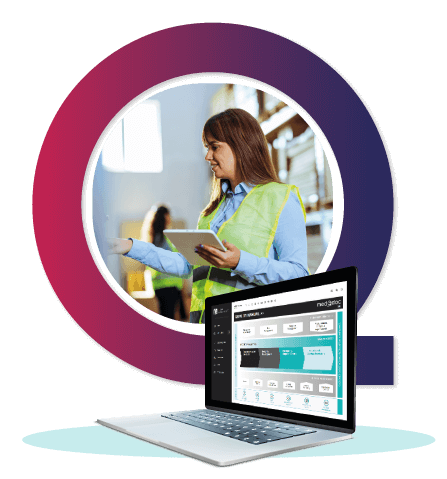
Class I Medical Device Manufacturers Need an established QMS Under the New MDR
Maintaining a robust Quality Management System (QMS) is critical to ensuring compliance, product safety and customer satisfaction in today’s highly-regulated MedTech industry. While traditional paper-based QMS solutions have been relied upon for years, technological advancements have paved the way for more efficient electronic Quality Management Systems (eQMS).
Compared to traditional paper-based QMS solutions, electronic Quality Management Systems offer many advantages that extend beyond just regulatory compliance. Enhancing company efficiency, streamlining administrative tasks and simplifying audit preparation are just some of the many cost-cutting benefits that an eQMS delivers. In this blog, I explore why an eQMS is a more cost-effective choice compared to its paper-based counterpart. I also delve into why it helps MedTech companies better meet industry standards and regulatory requirements.

Implementing a robust QMS is not only essential for regulatory compliance but also critical to ensuring the safety and efficacy of medical devices. Companies with a comprehensive QMS discover very quickly that it acts as the backbone of its quality infrastructure, guiding its processes to ensure that products meet high standards and regulatory requirements.
A QMS provides a systematic approach to managing quality processes, documentation, audits and corrective actions. It facilitates traceability, risk management and regulatory reporting, all of which are essential in the MedTech sector.
Importantly, validated eQMS solutions facilitate compliance with regulations such as the European MDR and the American QSR as well as important international standards like ISO13485 and ISO14971 and FDA guidelines. It ensures that quality objectives are met, risks are identified and mitigated, and non-conformities are addressed. These processes require much more administrative work using paper-based methods.
The right eQMS will also foster a culture of continuous improvement through its systematic approach. It enables companies to adopt best practices and implement corrective actions that lead to better product quality, fewer defects and increased customer satisfaction.
While paper-based QMS solutions have played a valuable role in the past, they pose several challenges that hinder continuous improvement and efficiency:
Document control and versioning:
Managing paper-based documents makes version control difficult. When multiple individuals need access to a document simultaneously, it becomes difficult to track and manage changes. This complicated process can also make individuals hesitant to initiate changes. This can result in outdated or conflicting versions being used, potentially leading to compliance issues or quality discrepancies.
Approvals and sign-offs:
Document approvals and sign-offs can be especially challenging with paper-based QMS solutions. When each document needs to be signed by multiple people across different functions within an organisation, gathering wet signatures can be time-consuming and resource-intensive. Electronic signatures may involve third party software that is not validated and hence not compliant.
Collaboration and accessibility:
Paper-based systems are not conducive to real-time collaboration, especially in organisations with distributed teams. Sharing physical documents can become cumbersome, causing delays and inhibiting timely decision-making.
Storage and archiving:
Storing large volumes of paper documents requires a fire-proof physical archive and management resources, which can be costly, not to mention time-consuming and labour-intensive.
Digital storage is all too often done using platforms such as Sharepoint without sufficient back-up and without following the regulations specific to archiving. An eQMS should meet an organisation’s archiving needs as well as being compliant to the regulations.
Limited data insights:
Paper-based QMS solutions offer limited opportunities for data analysis and insights. Analysing manual data becomes a difficult and error-prone process, making it more difficult for organisations to make meaningful data-driven decisions.

When selecting an electronic Quality Management System, it is essential to choose a solution that is tailored specifically to the unique needs of the MedTech industry.
Are you considering solutions that align with regulations and standards such as QSR, MDR and ISO13485? Is the solution flexible to accommodate future organisational growth, new regulations in foreign markets and emerging technologies? Does it have industry-specific templates made by experienced Medtech experts that can give you a head start in establishing robust quality processes? Selecting a solution that meets industry-specific requirements as well as your current and future business goals can save you from costly system replacements and extensive customisations.
Rather than opting for a solution that promises a wide range of overcomplicated functions, focusing on the right functions is key. Some core functions you should look for include centralised document management and automated workflows including, for example, change management and complaint handling. MedQdoc includes these functions and many more, which are designed specifically to help MedTech companies enhance efficiency and compliance.
Apart from specific functions, it is important to implement an intuitive and user-friendly eQMS. User-friendly solutions make the eQMS accessible to every department and stakeholder beyond the key users within the Quality department. This promotes cross-functional collaboration and ensures that everyone involved in quality processes can easily participate and contribute. A user-friendly interface also means that training requirements are reduced and users can quickly adapt to the system, increasing adoption and efficiency. Furthermore, when key individuals leave the organisation, the QMS can still function. Company-wide involvement means less vulnerability.
An eQMS makes it much easier to maintain document control remotely, which is essential in today’s hybrid working landscape for both large enterprises and small companies. With an eQMS, changes, updates and signatures can be done easily within minutes with version control so that documents are always up-to-date. Documents can also be accessed and managed securely from anywhere while maintaining the necessary level of security and data integrity to provide flexibility for remote teams and ensure business continuity.
Having an electronic Quality Management System is also key to being more “audit-ready”. With centralised document management, automated workflows and real-time monitoring capabilities, an eQMS reduces the time and effort needed to prepare for an audit. It helps companies generate audit trails and provide accurate and up-to-date documentation to demonstrate regulatory compliance. This reduces the risk of major audit findings, minimises disruptions and ultimately saves both time and resources.
If you are in the fortunate situation of being a start-up company or a company with a very limited QMS, you should take the opportunity of implementing an eQMS simultaneously with ISO 13485/QSR/MDR alignment to streamline the transition process and avoid rework in the future. The right eQMS solution can help you both with business efficiency, as described above, AND compliance with regulations at the same time.
If however, you already have a QMS and have taken the intelligent decision to implement an eQMS system, a well-planned transition of your current QMS is essential.
In both cases, once the eQMS decision is taken, a clever place to start is by a gap analysis that then leads to an eQMS implementation plan, preferably organized after the QMS regulations (ISO13485/QSR/MDR).
Even if you are new to the industry you have probably already started with some processes and produced some records such as design and development, testing, clinical studies, supplier evaluations without realizing these are QMS documents. Central to your eQMS implementation plan should be collecting what you have, organising it and identifying what is still missing.
If you already have a full paper-based QMS, my experience is that it is often owned and run by a QA/RA person or department, depending on the size of the company. Every QMS needs updating from time to time, so as a QA/RA person, I would take the opportunity of improving the QMS by highlighting its flaws and a good way to do that is by a gap analysis. An eQMS implementation project is also the perfect time to get senior management involved and engaged in the company’s QMS. By choosing an intuitive and user-friendly system, with only the functions you actually need, you’ll be able to demonstrate to senior management how an eQMS will improve and stream-line the business.
One company that I have worked with used an extensive paper-based QMS, and I used an eQMS solution that shows a schematic overview of their QMS as a tool for education. Once senior management saw that first page their reaction was “Oh – so this is what a QMS is!!”. Once they realized they could just click on the QMS-overview in the system to get to their management responsibility processes they became really interested and deeply committed to the implementation project.
Key to getting senior management on board is showing that the benefits of an eQMS are both efficiency AND compliance.
In summary, gap analysis of your current situation to create an implementation plan adapted to your reality and also involvement and attention from top management are my best tips of a smooth eQMS transition.
A well-functioning Quality Management System involves the whole company and not only a QA/RA department. With the whole company is involved, running and taking responsibility for their own processes while also understanding the interfaces between other functions and departments and their processes, the QMS will glue the company together, streamline the organization and also create a feeling of belonging and being important.
If everyone understands their part and contribution in a business, not just how important it is but also exactly how to do it through clear process description, it is not difficult to see how this will increase motivation and business efficiency. We all want to feel that we are needed and important, right?
A great way of creating this culture of involvement is by implementing an eQMS that the whole company has access to. A paper-based system is difficult to make accessible and easy enough to work with; it will often end up just being a QA/RA system. By making your eQMS user-friendly and intuitive, it will continue to be used by all employees and help internal alignment for a long time.
At the same time as being the heart of the company, increasing commitment and efficiency, an eQMS solution can support the whole organisation with compliance. If the easiest way to look up your processes and procedures is a user-friendly system, then that is where you’ll go. If your process is in a paper-based QMS stored somewhere you cannot easily reach or affect, chances are you’ll make your own decisions and probably miss important routines and methods.
This way, an eQMS leads to both compliance and quality. As we all know, fewer quality deviations and compliance issues will save on costs in the long run.